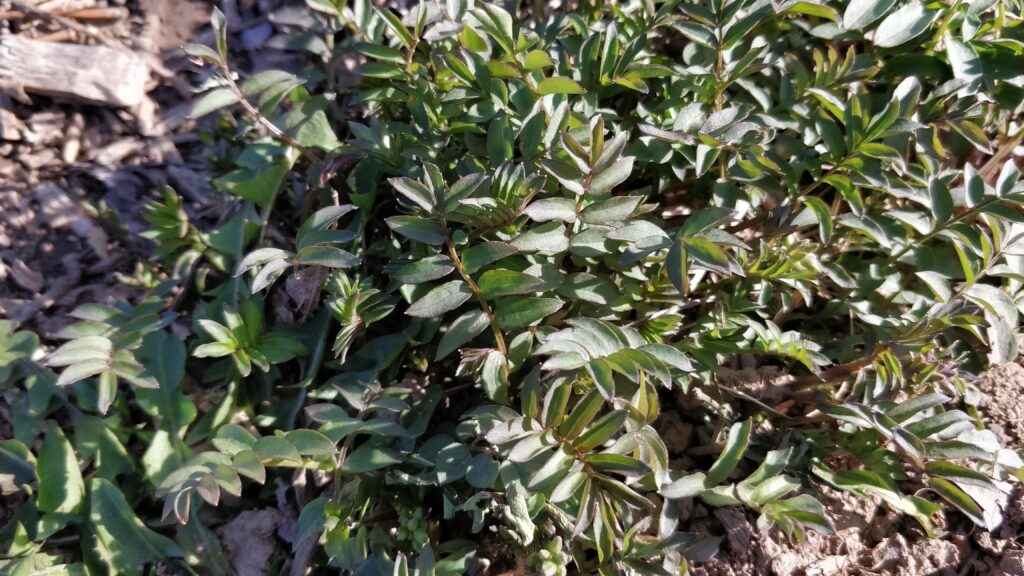APRIL
Getting to Know the Natives In Your Backyard, A Month at a Time
Spring time at Flutter By Meadows is a vibrant time. The birds are returning (and some are leaving), and the emerging native plants are awakening through the leaf litter. Some hardly resemble more than just cluster of green looking like the leaves from celery or baby spinach. For me, one of the hardest things about understanding native plants was knowing what to look for in my beds. When you are new to natives, the endless sea of green shoots can be daunting! I was constantly trying to figure out what was what. It was easy to spot a dandelion, but what was this and that? In my head, quietly saying to myself: “Are you a good weed or a bad weed?”
Some native plants, like the summer phlox for example…start out in April as a sprout no taller than a toothpick. But by July, they are nearly over my head! No doubt, unless you have a super talent in leaf identification it can be really hard to tell what is what!
To better understand what is growing and spreading and sometimes even jumping beds in an opportunistic quest to grow elsewhere, I relied on a few sources:
- I constantly use the book: Wildflowers in the Field and Forest.
- I also love visiting Bowman’s Hill Wildflower Preserve. They have a ton of educational signs and placards all over that tell you what plants (and trees) you are looking at. They also have workshops and classes too.
- And while it is still a little new to me, I also rely on the app iNaturalist quite a bit.
The above, plus taking endless photographs to help me remember locations of my plants from one year to the next, I am starting to get better acquainted. We used to be on a first-name basis. As in, “Hi there cute little purple flower.” So, as time moves along, and I find myself spending more and more time “yardening” I would like to get to know them a little better and take notice that the wild geranium makes the long cold days of February seem like eons ago. Eventually maybe I will even be saying: “Well…good day, Geranium maculatum.” Okay…so I don’t really talk to my plants. But some days, I swear they talk to me. (It’s the plant on the heading image of this article).
I hope this Soon to Bloom Series will help give a little help in telling which weed should go, and what native plant (which often have the word “weed” in their nomenclature) should be left alone to do its thing.
In the vase pictured below, there are 5 native plants pictured, and they are almost all in my rain garden. They are as follows going clockwise:
Virginia Bluebells (Mertensia virginica)
Golden Ragwort (Packera aurea)
Golden Alexander (Zizia aurea)
Woodland Phlox (Phlox divaricata)
Wild Geranium (Geranium maculatum)
Jacob’s Ladder (Polemonium reptans)

And here (shown below) is what they look like before they bloom, some no bigger than an inch off the ground. Pictures of new emerging growth taken on April 5, 2021.

They look a little like baby spinach leaves to me!

This is a plant that loves to spread! But its bloom time is relatively short. Note the dark purple buds, but the plant will bloom bright yellow.

I don’t have a picture of Golden Alexander when it is really tiny, but those heavily toothed leaves should be pretty recognizable. This one grows in my meadow.

These little shoots are so tiny still. Woodland phlox grows from a shallow root system, slowly spreading over time (divaricata means “with a spreading and straggling habit”). With that shallow root system, they are on the perimeter of my rain garden where they don’t get “wet feet” and they love dappled sunshine as the name “woodland” implies.

When in full bloom, the leaves of this plant are a vibrant green and resemble the leaves of celery, only much larger. While the dainty flower is shown in the header graphic to this article.

A very low grower, the diminutive purple to periwinkle blue flowers are a delight to see while walking by to get the mail.
As the bloom time is relatively short for these plants, I often find myself making little mini jar bouquets, just so I can see them a little bit longer.

And what they look like when in bloom “in the field” as they say:

The Virginia Bluebells are so beautiful, that I gave them their own photo below, plus some more woodland phlox on the lower right, and the beginnings of next months’ Soon to Bloom Series. Can you guess the plant? Find out next month!!!

And if you still can’t figure it out, not to worry. If you don’t know, let it grow!

